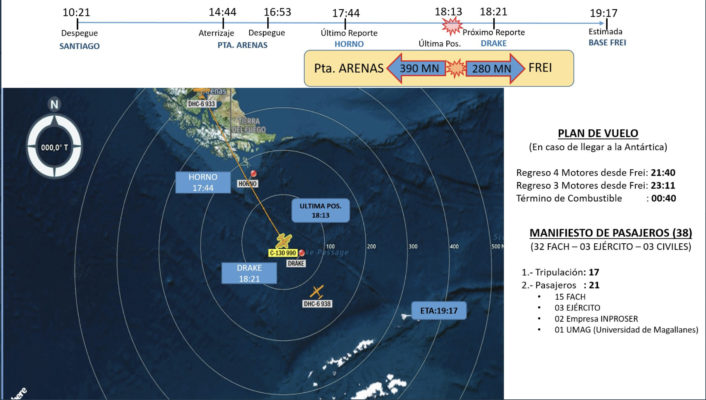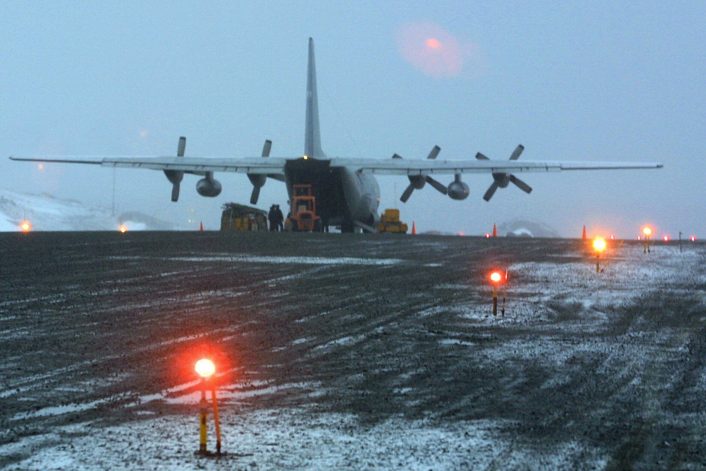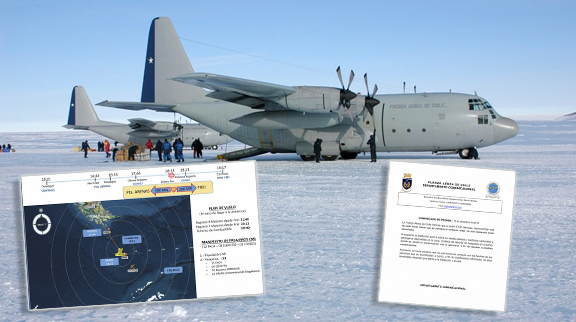Aircraft En Route to Antarctica Over Treacherous Waters When Comms Was Lost.
A Chilean military C-130 transport flying from Punta Arenas, Chile to King George Island, Antarctica was reported missing yesterday when communications with the aircraft were lost at 18:00 local time (21:00 GMT) as it flew over the treacherous Drake Passage between South America and Antarctica. There were 38 persons reported on board the aircraft, a 17-person crew and 21 passengers. The aircraft was approximately 450-miles into its total 700-mile flight when contact was lost at the halfway point of the crossing.

A statement from Chilean Air Force General Eduardo Mosqueira indicated that the aircraft did not send a distress signal prior to its disappearance.
Comunicado de Prensa N° 2 #FACh pic.twitter.com/aCJqLxENZT
— Fuerza Aérea de Chile (@FACh_Chile) December 10, 2019
The aircraft, one of three C-130 transports operated by the Chilean military, was en route to one of the nine Chilean military bases operated in Antarctica. The vast Antarctic ice continent is divided up into pie-shaped sections belonging to separate member-nations of the International Antarctic Treaty Organization, or “IATO”. The Chilean sector borders UK and Argentinean controlled territories of Antarctica.
The Drake Passage is the shortest distance from the South American continent to the Antarctic continent, and is frequently used for passages by both air and sea between South America and Antarctica. The passage is known for frequent storms and 40-foot waves. Sea conditions in the area where the aircraft was lost were reported as moderate at the time of its disappearance. However, the weather forecast for the 500-mile wide open ocean passage for today called for temperatures of 2° Fahrenheit with near gale-force winds and snow. High winds in the region will increase wave size in the area, making search and rescue operations more difficult. Lighting conditions in the region are favorable however, with the area having approximately 20-hours of daylight due to the season in the extreme southern hemisphere.

Fuerza Aerea de Chile)
The Lockheed C-130 Hercules is a four-engine, turboprop transport aircraft that first flew in 1954. It is in service with over 60 countries as one of the most prolific and successful transport aircraft in history. The aircraft has been configured in multiple versions to perform missions varying from medical transport to airline freight service to armed gunship and many more. It is known for its ruggedness and ability to operate from unimproved airstrips. As the longest-produced military aircraft in history, well over 2,500 C-130s have been built and the aircraft remains in production today in updated versions.
Note: This Author has made the passage from Ushuaia, Argentina to Antarctica in 1999 onboard the Russian-built icebreaker Akademik Ioffe.









